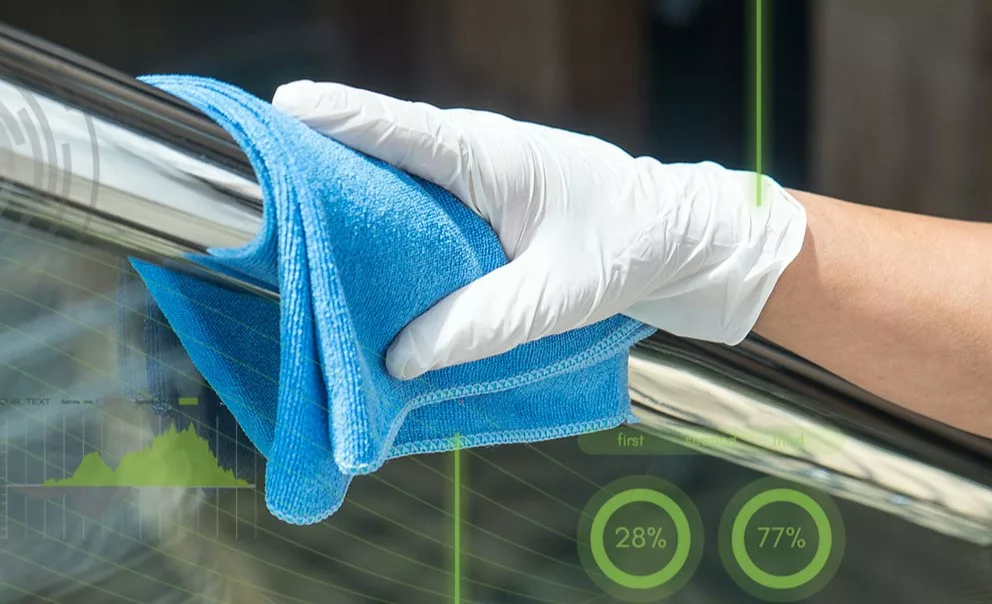Blogs
Maximizing ROI: Smart Cleaning vs. Traditional Staff Management

In today’s fast-paced world, businesses are always looking for ways to optimise operations while minimising costs.
However, achieving cost-savings while preserving quality isn’t always easy and one area in particular where standards cannot slip is cleanliness. Maintaining high standards of hygiene is not just a matter of aesthetics, it directly impacts health, productivity, and overall satisfaction of occupants.
As a result, for facilities management teams, finding cost-effective approaches to cleaning which won’t compromise cleanliness and hygiene standards, is tough. While implementing data driven cleaning technology may seem like a significant upfront investment, the long-term savings and operational benefits are proving to be a smart investment for businesses.
Traditional Cleaning versus Digital Smart Cleaning
Traditionally, cleaning has been an entirely manual process, achieved through the hiring and management of cleaning staff. The only way to reduce cleaning costs is to reduce staff numbers or cut back cleaning hours, inevitably leaving the volume of cleaning and its quality, compromised.
However, with advancements in technology, data-driven cleaning solutions have emerged which are not only revolutionizing the way facilities are managed and cleaned but are helping businesses achieve operational efficiencies at the same time.
Offering a cost-effective alternative, without affecting cleaning volume or standards, the technology is elevating hygiene levels and in turn boosting overall customer satisfaction.
Return on Investment
Whilst the average business in the UAE might spend up to AED 2,500 per cleaner, per washroom every month, the upfront cost of implementing data-driven cleaning solutions can be as little as AED 2,500, with the initial investment typically including the installation of sensors, IoT devices, and software infrastructure.
Once the system is in place, ongoing costs are low, primarily consisting of maintenance and occasional upgrades. This is in contrast to the ongoing expense of managing cleaning staff, which includes salaries, benefits, training, and supervision.
Advantages Beyond Money Saving
The return on investment of implementing data-driven cleaning solutions compared to the hiring and managing cleaning staff, is clearly a smart investment for businesses. As well as long-term savings, the operational advantages reach far beyond monetary efficiencies.
-
Efficiency and Productivity
Data-driven, smart cleaning solutions offer unparalleled efficiency and productivity gains compared to traditional staff management. By leveraging real-time data insights, digital solutions enable predictive and proactive cleaning strategies. Sensors can monitor everything from footfall to occupancy levels, allowing cleaning teams to prioritize high-traffic areas and adjust cleaning schedules accordingly. This targeted approach not only improves overall cleanliness but also maximizes the productivity of cleaning staff by eliminating unnecessary, costly tasks, and optimizing workflow.
-
Quality and Consistency
Maintaining consistent cleanliness standards across large facilities can be challenging with traditional staff management. To guarantee every area is covered, staff numbers need to be maintained and their activities monitored and audited by management, both of which are costly practices. Physical, paper-based audits are required, which are completely subjective and not standardized.
In contrast, data-driven cleaning solutions provide an unmatched level of consistency and quality control. By standardizing cleaning processes and utilizing real-time monitoring and auditing capabilities, organizations can ensure that cleaning tasks are completed to the highest standards consistently. This not only enhances the overall cleanliness of the facility but contributes to improved occupant satisfaction and offers a safer, more hygienic space for everyone.
-
Adaptability and Scalability
Traditional cleaner scheduling can be a time-consuming process. If one member of the team doesn’t show up for work, the entire schedule needs to be updated, and time and money are invested in rescheduling.
Data-driven cleaning solutions are both adaptable and scalable. If a business grows and evolves, the technology can easily adapt to their changing needs, allowing organizations to scale their cleaning operations efficiently. Whether it’s expanding to new facilities or adjusting cleaning schedules based on seasonal fluctuations, data-driven solutions offer the flexibility needed to meet evolving demands.
-
Enhanced Staff Wellbeing
Data-driven cleaning empowers cleaning staff by providing clear, real-time overviews of their tasks and the manager’s expectations, which in turn promotes better timekeeping and efficiency among cleaning teams. The system also allows managers to identify performance patterns and offer necessary training or task redistribution, leading to improved job satisfaction and overall staff wellbeing.
And by ensuring the most ambient environment for both occupants and staff, thanks to the monitoring of variables such as air quality and AC temperature, cleaners are guaranteed the most hygienic and comfortable space to work in.
Digital Cleaning: The New Norm
Over the last couple of years, data-driven cleaning solutions have proven to offer a cost-effective alternative to traditional staff management. Leveraging real-time data and analytical insights, they not only optimize efficiency and productivity, but guarantee consistent cleanliness standards which can adapt to evolving needs.
While an initial investment may seem significant, the long-term savings and operational benefits make data-driven cleaning a wise investment for businesses looking to maximize ROI in facility management.
Latest Posts
World Earth Day: Advancing Water Sustainability with Smart Washroom Sensors
April 22 marks Earth Day, a global event dedicated to environmental protection and sustainability.
Why the Smart Washroom market is set for explosive growth in 2025
Smart washroom technologies have revolutionized the public restroom experience.
Smart Washrooms in Airports
Modern airports are busy spaces. With millions of passengers transiting daily, efficiency and cleanliness are more than conveniences – they are necessities.
Greenwashing in the Washroom – are Eco-Friendly Products all They Appear?
With sustainability a key focus across all sectors, many brands are now engaging in ‘greenwashing’ – the practice of misleading consumers by exaggerating environmental benefits.
The Future of Washrooms: How Smart Solutions Are Redefining Hygiene, Sustainability, and User Experience
The traditional washroom has undergone a significant transformation in recent years. Often viewed as a basic space with limited functions,
